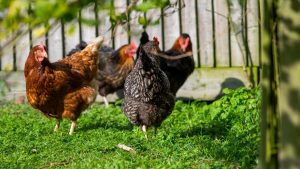Claresholm town council to update livestock bylaw
By Rob Vogt
After 40 years, Claresholm town council is updating the town’s livestock bylaw.
The decision came at council’s May 8 meeting, after a presentation by Chief Administrative Officer Abe Tinney.
He explained the town’s livestock, poultry and fowl bylaw has not been updated since passing in 1983.
With the growing popularization of urban chickens, urban beekeeping, and other fowl being raised in backyards, the bylaw department wanted to update the bylaw as they were fielding calls, questions, and concerns regarding these animals.
As the municipal planning commission is familiar with land uses and areas within the community as well as the authority over subdivisions and uses, the development department has been working with the planning commission to draft an updated bylaw. To date there have been no complaints about any livestock or poultry within the community the town is aware of.
Administration proposed updating the bylaw specifically to restrict the number of urban chickens per property within the corporate boundaries of the town, which will align more closely with surrounding municipalities. Some municipalities do not allow urban chickens or beekeeping, but within the town there are larger parcels of land – agricultural transitional and country residential land-use districts – that would be large enough to allow this for personal use.
Currently the bylaw has specific legal land descriptions for livestock/horses, and required permits for anywhere else. However, the town does not have a permit process in place. Additionally, as this is not business-related, it would be more appropriate to have a licensing process, similar to dogs.
Highlights of the new livestock bylaw:
1) Definitions and sections all updated for clarity. Care and control restrictions have been removed and reference has been made to the Animal Protection Act and Environmental Protection and Enhancement Act, as they supersede any municipal bylaw, and provide all requirements.
2) Exemptions have been provided for veterinarian clinics, areas where the land-use bylaw has been approved, parades, and so on.
3) Restriction of urban bees at this time. This item can always be re-visited. However, living in an agricultural area, access is fairly easy and pollinators can be found in town as the size is not the same as a city. Control of bees is very difficult and they could travel to parks, schools, and so on, and have the potential to be a pest.
4) The bylaw exempts livestock from agricultural transitional districts, where the land-use bylaw has approvals granted and/or the use listed within those specified land-use districts.
5) Existing large R1 residential parcels, that have equine, are permitted to continue as per the bylaw. Instead of exempting specific parcels, the bylaw has made the provision more equitable based on parcel size and number of animals.
6) Limit urban hens, that is poultry only, to a coop of three or five, depending on the parcel size/zoning. More are permitted in the acreages for example, and require an annual licence for the coop. This will ensure they are provincially registered and the appropriate distance from residences. There is a coop licence application fee of $50.
Council then passed first reading of the updated bylaw with all of council voting in favour except Coun. Craig Zimmer who was opposed, and Mayor Chelsae Petrovic who is on leave from council.
The final two readings will come back to one or two future meetings.

